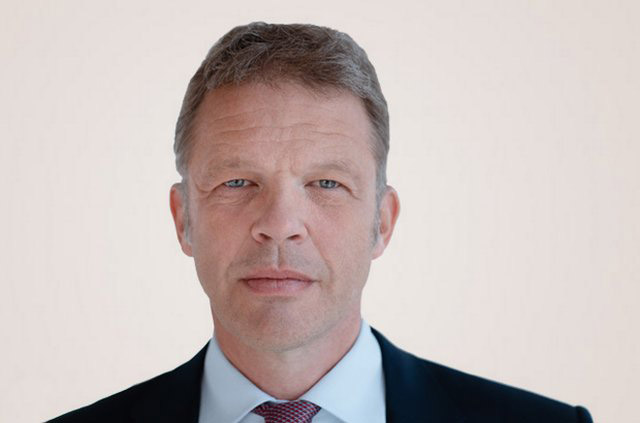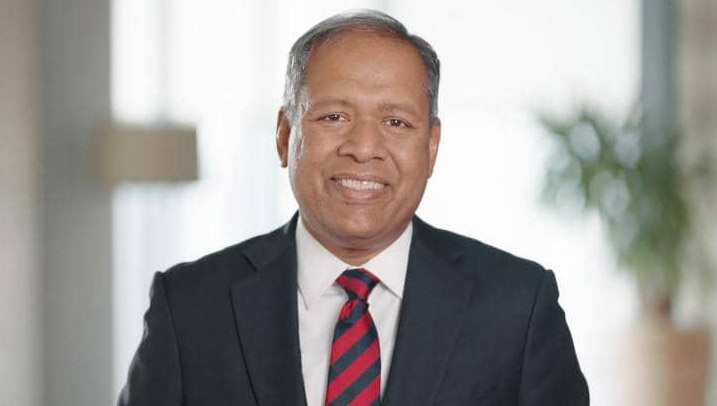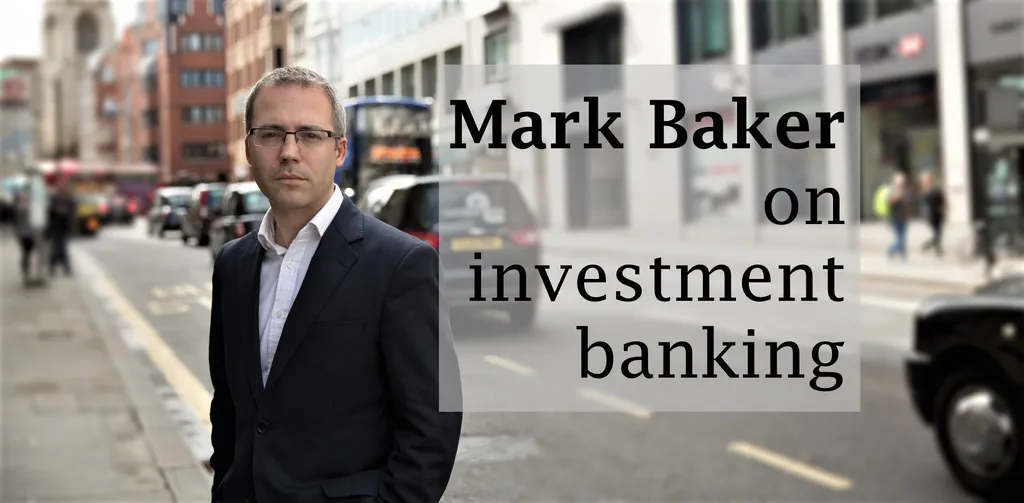First-quarter earnings from Deutsche Bank and Barclays on Thursday morning offered a useful compare-and-contrast of two investment banking franchises that have both grappled with existential questions in recent years.
Both firms have been careful to stress their continued commitment to investment banking, but Deutsche Bank chief executive Christian Sewing probably has the lead there on CS Venkatakrishnan, his counterpart at Barclays, by virtue of having started to reshape his firm back in 2019.

Venkat, having risen to the CEO job in 2021, only really started to put his personal stamp on Barclays at the bank’s investor day in February this year, at which he outlined his vision of an investment bank that cuts its percentage of group risk-weighted assets to about 50% in 2026 from 58% now and is generally much less of a dominating force in the group.
It has been a similar story at Deutsche. One of the thrusts of the restructuring that Sewing began back in 2019 has been to make the overall group less dependent on its investment bank and therefore reduce the volatility of income, particularly in trading.
Cutting the capital expended by it, particularly in sub-scale businesses like equities sales and trading, which he shut down, has also been critical.
But for all those intentions, it continues to be the investment bank that drives performance at both firms. Pre-provision profit of £1.3 billion at Barclays’ investment bank was 48% of the group’s total, while the €1.4 billion posted by Deutsche’s was 57% of the group.
The 1% rise in group revenues at Deutsche would have looked rather different without a 13% increase in the investment bank. Its much-vaunted corporate bank, which is supposed to be closer to how Sewing wants people to think about the firm, saw revenues fall 5%, and is still smaller than its fixed income sales and trading unit alone.
The private bank, which this quarter has been recast into two units that bring together personal and premium banking in one line and wealth management and private banking in another, fell 3%.
All told, Deutsche’s investment bank accounted for 39% of group revenues in the first three months of the year, and 32% in the full year 2023. In 2022, it was 37% and in 2021 it was 38%.
When conditions allow a strong print from the bank’s traders, it is hard to resist, and it is worth noting that the fixed income increase was better than at some of the big US firms.
And even though revenues at Barclays fell – 7% at the investment bank and 4% at the group as a whole – the investment bank still accounts for practically half of group revenues.
Over reliance
It is the kind of obstinacy that one doesn’t like to complain about: you take revenues wherever you can find them. But it is illustrative of just how difficult it is to pivot firms that have for years built themselves to be reliant on one business.
First, the basics. Advisory revenues were down year-on-year at Barclays but up at Deutsche. Equity and debt capital markets rose more at Deutsche than Barclays, but Barclays remains much the bigger firm for advisory and ECM.
Taking the three lines together, investment banking fees rose by just 2% at Barclays but 67% at Deutsche, and both banks posted their best three months since the first quarter of 2022.
In dollar terms, fees totalled $782 million at Barclays and $549 million at Deutsche.
On the markets side, Barclays saw a fall of 21% in fixed income, but that was off a very strong print in the year-ago period. In dollar terms, the fall was 19%, although this drops to 14% if you strip out unusual inflation-related gains that the bank posted in the first quarter of 2023.
Deutsche’s FICC business is bigger than Barclays’ – it is almost as big as the UK bank’s FICC and equities lines combined – but it still managed to gain 8% on what had also been a strong period the previous year.
A strong 25% rise in equities (30% in dollars, but only 11% if you strip out a £125 million gain on Visa B shares) meant that Barclays’ overall markets business fell by 8%, to $2.9 billion-equivalent. Deutsche’s FICC unit posted $2.8 billion in the quarter.
All of which means that Deutsche’s trading and investment banking business – while smaller than Barclays’ overall, and much smaller in places – arguably looks like the one to have come through the quarter with more momentum.
As it happens, both banks are likely to be broadly happy with that outcome. Investors seemed to be too – both stocks rose by 6% to 7% by early afternoon.
Sewing has also understood the bank needs to make up ground again in capital-light areas like advisory and ECM. That is difficult to do right now, given the low levels of activity in both, but he will have been pleased with the early showing for 2024.
The fact that FICC also rose in the quarter was a nice little bonus, but I reckon Sewing will have been much more excited about the roughly $200 million rise in investment banking fees than the roughly $200 million rise in FICC revenues.
Pathway to success
Over at Barclays, it was a slightly different picture.
For all that he wants the investment bank to feature a little less highly in the capital mix at the bank, Venkat still wants it to compete.
His reference on Thursday morning’s analyst call to how the fixed income trading business had not captured market opportunities like some of its peers was an unusually specific criticism, as was his noting that there was still more to do on European rates – one of the bank’s “focus” business lines, targeted at the recent investor day for particular attention.
Like Sewing, Venkat also knows that Barclays is a frequent underperformer in advisory and ECM. He highlighted the better quarter for DCM, but also that “there is naturally a longer pathway to success” in the other two. Naturally, yes, but this has also been the narrative at Barclays for about 10 years now.

Venkat does have some successes to point to here, though.
As he noted, the bank’s newish energy transition group has notched up nine mandates since late December. And advisory more broadly has “a healthy pipeline”.
From an investment banking perspective, Deutsche has been one of the better European earnings reporters for many years in terms of comparability with its big US peers, breaking out all the investment banking components much earlier than Barclays ever did.
This quarter, it has added another comparison, dividing its FICC sales and trading revenues into financing and everything else, making it easier to see progress in what is in theory supposed to be a less volatile source of revenues and therefore one that should be more highly prized by the market.
On that score, it is looking good. FICC financing was up 14% year on year in euro terms, and while that was less than the 31% rise at Goldman Sachs (where FICC financing has been traditionally lower until recent efforts to actively build it up), financing usually accounts for about 35% of Deutsche’s FICC revenues, compared with about 20% of Goldman’s.
Barclays also breaks out financing but aggregates its equities and fixed income result. Stripping out those inflation gains from the first quarter of 2023 sees financing income stable at about £700 million, about 31% of the total sales and trading revenues of the last three months, so more in line with Deutsche.
It has been a peculiar reporting season in some ways for global investment banks. There are clearly better signs after a somewhat lean period in origination and advisory, although traders have had more to shout about.
But as inflation worries persist, and markets rein in their rate-cut expectations, it is less certain that any early glimpses of better days ahead in ECM or M&A will actually come to fruition.
For many of the biggest firms, then, the last three months may indicate little. But for the likes of Deutsche and Barclays, which have another, more complicated narrative running alongside the vagaries of the investment banking pipeline, there is more to parse. The indications from both are good so far.




